If you’re a firearm enthusiast or a new gun owner, understanding the anatomy of a fire control group is essential. Whether it’s for maintenance, customization, or simply to deepen your knowledge, having a clear understanding of how this crucial component works is important. In this comprehensive guide, we will dive into everything you need to know about fire control groups.
From semi-automatic rifles to handguns, fire control groups are the heart of every firearm. They consist of various parts that work together to control the firing process, including triggers, sears, and safety mechanisms. By understanding the intricacies of a fire control group, you’ll not only be able to troubleshoot issues that may arise but also make informed decisions when it comes to upgrades or modifications.
Join us as we dissect the different components, explore their functions, and discuss the various types of fire control groups available. Whether you’re a dedicated shooter or just curious about the inner workings of firearms, this guide will provide you with the knowledge and confidence to navigate the world of fire control groups.
Components of a Fire Control Group
The fire control group (FCG) is a complex assembly that plays a vital role in the operation of a firearm. It consists of several key components, each contributing to the overall functionality and safety of the firearm. Understanding these components is essential, especially for those looking to maintain or modify their firearms. The primary parts of a fire control group include the trigger assembly, hammer and sear, disconnector, and safety selector. Each element has a distinct function that helps ensure the firearm operates as intended.
One of the most critical aspects of the fire control group is the trigger assembly. This component not only activates the firing mechanism but also influences the shooter’s experience through its feel and responsiveness. The design and construction of the trigger can significantly affect accuracy and control, making it a focal point for many firearm enthusiasts. Various types of trigger assemblies exist, ranging from standard models to more advanced options with adjustable settings. These variations allow shooters to customize their firearms to suit personal preferences.
Another important component is the hammer and sear, which work in tandem to control the firing process. The hammer strikes the firing pin when released, igniting the primer in the cartridge. The sear holds the hammer in place until the trigger is pulled, ensuring that the firearm does not fire accidentally. Understanding the relationship between the hammer and sear is crucial for troubleshooting and enhancing the firearm’s reliability. As with the trigger assembly, there are multiple designs available, allowing for modifications that can improve performance or reduce trigger pull weight.
Trigger Assembly
The trigger assembly is often regarded as the heart of the fire control group. Its primary function is to initiate the firing sequence when the shooter pulls the trigger. The assembly typically consists of the trigger itself, springs, and pins that hold the components together. The design can vary widely depending on the type of firearm, but the fundamental mechanics remain consistent across most models. A well-designed trigger assembly will provide smooth operation and a consistent pull, leading to improved accuracy.
In addition to its basic function, the trigger assembly can be customized for various applications. Shooters may opt for lighter or heavier trigger pulls based on their shooting style and preferences. Some trigger assemblies even offer adjustable settings, allowing users to fine-tune the pull weight and travel distance. This customization is particularly popular in competitive shooting, where precision is paramount. Understanding how to adjust the trigger assembly can significantly enhance a shooter’s performance and overall experience.
Moreover, the trigger assembly is often a focal point in discussions about firearm safety. A poorly designed or malfunctioning trigger can lead to unintended discharges, posing a severe risk to the operator and those nearby. Therefore, regular maintenance and inspection of the trigger assembly are essential for ensuring safe and reliable operation. Firearm owners should familiarize themselves with the specific trigger design of their AR-15 and understand the proper maintenance techniques to keep it in optimal condition.
Hammer and Sear
The hammer and sear are integral components that work together to facilitate the firing process in a firearm. The hammer is a spring-loaded part that strikes the firing pin when released, while the sear is a mechanism that holds the hammer in place until the trigger is pulled. This relationship is crucial for preventing accidental discharges and ensuring that the firearm only fires when intended. Understanding how these components interact is key to grasping the overall functioning of the fire control group.
When the trigger is pulled, it causes the sear to release the hammer. The hammer then swings forward, powered by its spring, and strikes the firing pin. This action ignites the primer of the cartridge, leading to the discharge of the bullet. The efficiency and reliability of this process depend heavily on the design and fit of both the hammer and sear. Variations in these components can lead to different firing characteristics, such as the weight of the trigger pull and the length of pull before the hammer is released.
Regular maintenance of the hammer and sear is essential for optimal performance. Over time, wear and tear can affect the connection between these components, leading to issues such as light strikes or failure to fire. Proper lubrication and periodic inspections can help identify potential problems before they become significant issues. For those interested in customizing their firearms, aftermarket options for hammers and sears can provide enhanced performance and a more tailored shooting experience.
Disconnector
The disconnector serves a vital role in the fire control group by ensuring that a firearm only fires one round per trigger pull, particularly in semi-automatic firearms. This component temporarily disconnects the hammer from the trigger during the cycling of the action, preventing the firearm from firing multiple rounds unintentionally. Understanding how the disconnector functions is essential for anyone looking to gain a deeper comprehension of their firearm’s operation.
When the trigger is pulled, the disconnector allows the hammer to fall and strike the firing pin, but it also engages during the cycling process. As the slide or bolt moves back to chamber another round, the disconnector prevents the hammer from being released until the trigger is fully released and then pulled again. This mechanism is crucial for ensuring the safe and controlled firing of semi-automatic firearms. If the disconnector fails or malfunctions, it can lead to dangerous situations where the firearm could fire multiple rounds with a single trigger pull.
Maintaining the disconnector is just as important as looking after other components of the fire control group. Regular inspections can help ensure that it is functioning correctly, and any signs of wear or damage should be addressed immediately. For enthusiasts interested in customizing their firearms, there are aftermarket disconnectors available that can enhance the responsiveness and reliability of the firing mechanism. Knowing how to properly maintain and possibly upgrade this component can significantly improve the shooting experience.
Safety Selector
The safety selector is a critical component of the fire control group that enhances the safety of a firearm. This mechanism allows the shooter to engage or disengage the firing mechanism, preventing accidental discharges. The design of the safety selector varies between firearms, but its primary function remains the same: to provide an additional layer of protection against unintended firing. Understanding how the safety selector works is essential for responsible firearm ownership.
In most firearms, the safety selector is typically positioned on the side of the lower receiver, easily accessible to the shooter. Engaging the safety prevents any movement of the trigger, hammer, and disconnector, effectively rendering the firearm inoperable. This feature is especially crucial in situations where a firearm may be carried or stored, as it reduces the risk of accidental discharge. Being familiar with the operation of the safety selector can help shooters develop safe handling practices and ensure that their firearms are always secured when not in use.
It is also important to note that not all safety selectors are created equal. Some firearms feature ambidextrous safety selectors that allow for easy operation by both right- and left-handed shooters. Additionally, there are aftermarket options available that provide enhanced functionality, such as adjustable positions or quicker engagement and disengagement. Understanding the various types of safety selectors can help firearm owners make informed decisions about upgrades that can improve safety and usability.
Functioning of a Fire Control Group
The functioning of a fire control group revolves around the seamless interaction of its components. When the shooter pulls the trigger, the trigger assembly initiates the firing process, releasing the sear, which allows the hammer to strike the firing pin. This cycle transpires rapidly, with each component playing a specific role in facilitating a successful discharge. Understanding this sequence is crucial for anyone looking to maintain or modify their firearm.
The trigger pull is a critical aspect of this functioning process. A smooth and consistent trigger pull allows the shooter to maintain control and accuracy, making it essential for effective shooting. The weight, travel, and reset of the trigger are all factors that can influence the shooter’s performance. For this reason, many firearm enthusiasts invest time in customizing their trigger assemblies to achieve their desired feel and responsiveness, ultimately enhancing their shooting experience.
In addition to the trigger pull, the cycling of the action also plays a significant role in the functioning of the fire control group. As the firearm discharges a round, the action cycles to chamber the next round, and during this process, the disconnector temporarily disengages the hammer from the trigger. This mechanism ensures that the firearm only fires once per trigger pull, allowing for controlled shooting. Understanding this sequence of events is vital for troubleshooting any issues that may arise during operation.
Types of Fire Control Groups
Fire control groups come in various types, each designed for specific firearms and applications. Understanding the differences among these groups can help firearm enthusiasts choose the right components for their needs. The most common types include single-stage, two-stage, and adjustable fire control groups, each with its unique characteristics and benefits.
Single-stage fire control groups provide a direct connection between the trigger and the hammer, resulting in a single, continuous pull. This design is often favored by shooters who prefer a straightforward and responsive trigger feel. Single-stage triggers can be found in various firearms, including rifles and pistols, and are popular among competitive shooters who prioritize quick and precise shooting.
On the other hand, two-stage fire control groups offer a more nuanced shooting experience. In this design, the trigger pull is divided into two stages: the first stage is a light take-up, while the second stage is a firmer pull that releases the hammer. This configuration allows shooters to better prepare for the shot, providing a clear indication of when the firearm is about to discharge. Many precision shooters prefer two-stage triggers for their ability to enhance control and accuracy.
Adjustable fire control groups are another increasingly popular option. These groups allow shooters to modify the pull weight and travel distance, offering a customized shooting experience tailored to individual preferences. This flexibility can be particularly advantageous for those who participate in various shooting disciplines or for those who want to fine-tune their firearms for specific applications. Understanding the various types of fire control groups can empower firearm owners to make informed decisions about upgrades and modifications.
Importance of a Quality Fire Control Group
Investing in a quality fire control group is paramount for any firearm owner. The performance of the fire control group directly impacts the overall reliability, accuracy, and safety of the firearm. A well-designed fire control group ensures that the components work harmoniously, providing a smooth and consistent shooting experience. For competitive shooters, this can mean the difference between winning and losing, while for recreational shooters, it can enhance enjoyment and confidence.
Moreover, a quality fire control group contributes to the longevity of the firearm. Poorly manufactured components can lead to premature wear and tear, resulting in malfunctions that could compromise safety. Regular maintenance is essential, but it starts with selecting high-quality components that can withstand the rigors of use. Firearms are significant investments, and ensuring that the heart of the firearm—the fire control group—is of high quality is a wise decision.
Lastly, a quality fire control group enhances safety features, providing assurance to the shooter and those around them. Components such as the disconnector and safety selector are designed to prevent accidental discharges, but these mechanisms must be reliable. By choosing a reputable fire control group, firearm owners can trust that their weapons will operate safely and effectively, allowing them to focus on their shooting experience without unnecessary worry.
Conclusion
Understanding the anatomy of a fire control group is essential for anyone involved in the world of firearms, whether they are seasoned enthusiasts or new owners. Each component, from the trigger assembly to the safety selector, plays a vital role in the operation and safety of the firearm. By familiarizing oneself with these elements, shooters can enhance their skills, troubleshoot issues, and make informed decisions about upgrades and modifications.
The intricacies of a fire control group may seem daunting at first, but with time and practice, they become an integral part of the shooting experience. Investing in quality components and understanding their functions promotes not only better performance but also increased safety. As firearms continue to evolve, a solid grasp of the fire control group will remain a cornerstone of responsible firearm ownership.
In conclusion, whether you are looking to maintain, customize, or simply deepen your knowledge, understanding the anatomy of a fire control group is vital. This guide serves as a foundation for exploring the nuances of firearm operation, paving the way for a more enjoyable and confident shooting experience.
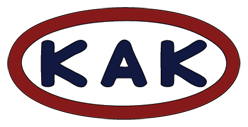
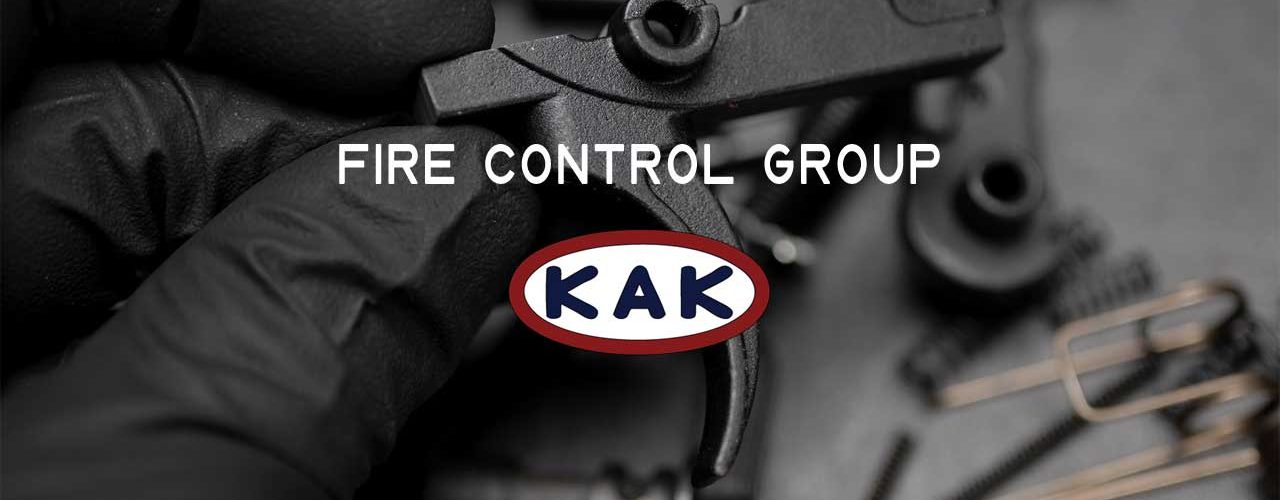
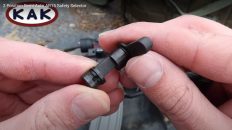
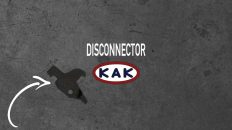
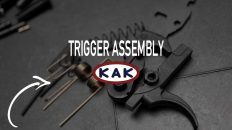
Add comment